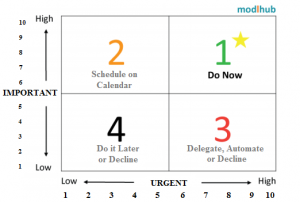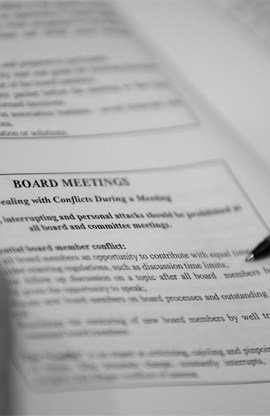The Eisenhower Principle Can Be a Guide to Associations
In a 1954 speech to the Second Assembly of the World Council of Churches, former U.S. President Dwight D. Eisenhower, who was quoting Dr J. Roscoe Miller, president of Northwestern University, said: “I have two kinds of problems: the urgent and the important. The urgent are not important, and the important are never urgent.” This “Eisenhower Principle” is said to be how he organized his workload and priorities.
Eisenhower recognized that great time management means being effective as well as efficient. In other words, we must spend our time on things that are important and not just the ones that are urgent. To do this, and to minimize the stress of having too many tight deadlines, we need to understand this distinction:
• Important activities have an outcome that leads to use achieving our goals.
• Urgent Activities demand immediate attention, and are usually associated with achieving someone else’s goals. They are often the ones we concentrate on and they demand attention because the consequences of not dealing with them are immediate.
When we know which activities are important and which are urgent, we can overcome the tendency to focus on unimportant urgent activities (such as firefighting maintenance issues that could be delegated to others such as your manager), so that we can clear enough time to do what’s essential for our success. This is the way we move from “firefighting” into a position where we can truly improve our associations.
How to Use Eisenhower’s Principle
To use this principle, list all of the activities and projects that your board needs to do. Try to include everything that takes up your time as a board member, however unimportant. Next, think about each activity and put it into one of four categories:
• Important and urgent
• Important buy not urgent
• Not important but urgent
• Not important and not urgent
Then schedule tasks and activities based on their importance and urgency.
Source: https://www.mindtools.com/pages/article/newHTE_91.htm
Analysis of Strategic Challenges for _____________________________________
Step One: List your challenges/ problems and rate level of urgency and importance (between 1-10, with 10 being highest urgency and importance).
1. Urgency # ________ Importance #_________
2. Urgency # ________ Importance #_________
3. Urgency # ________ Importance #_________
4. Urgency # ________ Importance #_________
5. Urgency # ________ Importance #_________
6. Urgency # ________ Importance #_________
7. Urgency # ________ Importance #_________
8. Urgency # ________ Importance #_________
Step Two: Graph your problems on the following chart below and determine which challenges/ problems you need to do now, schedule on the calendar, assign or delegate, or do it later/decline.

